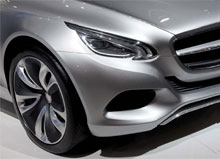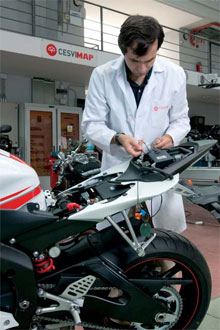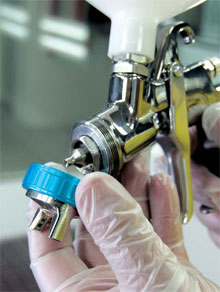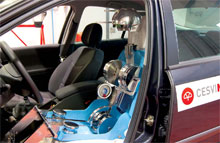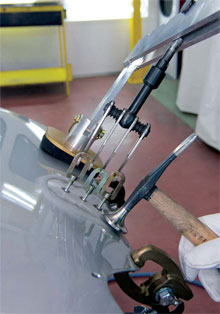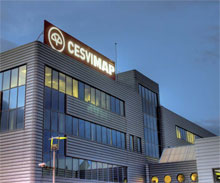Another way of reducing the cost of motoring in our societyPROPERTY
Ignacio Juárez. General Manager CESVIMAP- Ávila (Spain).
It is almost 40 years now since a number of motor insurance companies began to share their concerns about the trend in the cost of motor claims, especially those involving material damage. From the exchange of their respective experiences, there was one thing on which they agreed: the more they knew about the vehicles, the easier it was to establish true expectations of cost. In short, knowing about the insured risk, the vehicle and its circumstances, its use and the driver, allowed the business to be managed more appropriately.
Ever since, there has been a succession of initiatives promoted by the world’s most important insurers, gathering information about vehicles which could be useful to them. This has led to the current situation in which we have vehicle research centres promoted and owned by insurance companies. These are generally established in countries with a powerful automotive industry and an insurance sector that is equally strong or profoundly aware of an almost axiomatic principle: the more you know about a subject –in this case, motor insurance business– the more easily you can control and manage it.
This idea, which can generally be considered to be the common denominator of such centres, has many different nuances and orientations in order to adapt to the special characteristics of each insurance market. For example, if in a particular country concern about controlling costs is more important in the area of material damage caused by collisions, this will be the area in which the centre or centres established there will work, whereas in others the focus will be on theft or personal injury. The concept is the same: investigate in order to know – although implementation of the idea may be different.
At the world level, there are many initiatives promoted by public administrations or by vehicles and its components’ manufacturers, but the centres promoted by insurance companies have their own special features, and the most important are grouped in the Research Council for Automobile Repair, RCAR, (www.rcar.org), made up of 24 centres in 19 countries, six of them thanks to the impetus provided by MAPFRE (Spain, Argentina, Brazil, Colombia, France and Mexico).
The more one knows about the vehicles, the easier it is to establish true expectations of cost
Pricing
Although the insurers’ initial intention was to learn about the characteristics of claims costs –what we might call “motor insurance after-sales”– today they have also given their research centres the job of obtaining information that allows them to start out from a technical basis in order to set the price of insurance.
Work in this field is very varied, given that it is necessary to take account of:
- The particular features of the different types of vehicles (private cars, motorbikes, mopeds, lorries and commercial vehicles, buses, tractors, agricultural machinery).
- las garantías que las aseguradoras ofrecen (daños al propio vehículo, robo, daños derivados de la responsabilidad civil, sean personas o bienes materiales, averías, mantenimiento).
Based on these criteria, the vehicles are studied in order to know how they are constructed:
- Design and configuration of structures and materials (steel, aluminium, plastics, glass, fibres, rubber).
- Systems for joining the different parts (screws, welds, adhesives, bolts, clips).
- Equipment (operating equipment, active and passive safety equipment, anti-theft equipment).
It is also interesting to know how they perform under different conditions of use, mainly when the expected risks to which they are exposed materialise: collision, fire, breakdown or flooding, for example. And if it has not been possible to prevent the risk from materialising, it is then necessary to investigate recovery of the property (the motor vehicle) or of the damage caused (i.e. its repair).
The diverse purposes and tasks involved mean that research centres first need to study vehicles as if they were making an anatomical study and then analyse their behaviour when subjected to impact, attempted theft, fire and flood, amongst other tests. The most paradigmatic example revolves around controlled-speed crash tests. A detailed analysis of the structure, materials and systems for joining parts is previously carried out. The crash test reveals their behaviour, the repairs subsequently required, the degree of difficulty and their cost. This final aspect means that researchers also have to study repair methods, equipment and products.
“Motor insurance after-sales” includes the services that the insureds have to receive, depending on the coverage and the conditions agreed in the insurance contract
All this research work gives rise to very important conclusions for insurers. If we continue with the example of the crash test, it becomes clear from the information obtained that sometimes vehicles in the same segment which are outwardly very similar and also similarly priced are not damaged in the same way and do not cost the same to repair. From an actuarial point of view, and disregarding other determining factors such as the use the driver makes of the vehicle, this information would lead us to suppose that the price of own-damage insurance ought to be different, given that the risks involved are different. In short, it would form the basis for classifying or rating vehicles, based on the potential risk that the insurers are assuming.
However, the work of the research centres does not stop there. Their experiences are very valuable to vehicle manufacturers, to whom they suggest construction and repair solutions which improve the performance of their models and make them easier to repair. The research centres grouped together in the RCAR have established different types of crash tests which allow them to exchange the results of the tests that they carry out and, based on those results, to establish communication strategies with vehicle makers so that they in turn may consider their construction and repair suggestions.
We are talking about reducing the cost that the motoring phenomenon has in our societies
Motor insurance after-sales
Under this heading we could include the services that insurers have to provide to their customers, depending on the coverage and the conditions agreed in the insurance contract. In the case of motor vehicles, aftersales services arise when the risks covered under the contract materialise and affect the persons or the property insured – usually referred to as personal injury (injuries, incapacity or other consequences, and also death) and material damage (collision damage, fire, theft, roadside assistance, breakdowns, maintenance), respectively.
In the case of personal injury, the research centres’ work focuses on studying the different types of accidents and the consequences that these may have for the occupants of the vehicles involved and for other road users.
This field of action is closely associated with the two most common types of road safety – active and passive. The first leads to the study of structural elements and equipment designed to prevent accidents (anti-lock braking systems, stability control systems, lanedrift warning systems, collision warnings). The second tries to reduce the consequences for people, once an accident occurs, by studying materials and structures in order to ascertain whether their behaviour in collisions allows them to absorb the energy released, so that it does not become a threat to people’s personal safety. This would include restraint systems (inertia reels and safety belts, active headrests and seats, airbags) and studies of the harmfulness of the shapes and materials used for the inside and outside coverings of vehicles, in order to avoid their capacity to cause injury to occupants, pedestrians and other road users. The bodywork itself is also considered to be a passive safety element, given that the manufacturer has planned how it should deform in the event of a collision in order to prevent or reduce damage. Consequently, its design and configuration and the materials from which it is made are not the result of chance.
The research work, which often goes unnoticed, acquires all its relevance from the centres’ informative task, through training activities and publications
Some centres are also getting into what is known as “tertiary safety”, the aim of which is to locate and rescue victims of road accidents, based on new communication technologies. This also enables stolen vehicles to be located and recovered.
Where research into material damage is concerned, the work centres on aspects of a vehicle’s repairability in the face of possible collision, flooding, breakdown, fire or theft. For example, in the case of collision damage, crash tests form the basis for ascertaining repairability. Studying the methods, equipment and products needed for repair makes it possible to determine the times for replacement, repair and painting, as well as the cost of materials: spare parts, paint products and various consumables. In this way, many of the research centres obtain repair methods, as well as tables of the time and materials needed for repair and painting.
Closing the circle
The job of these centres is not confined purely to research and experimentation but also involves communicating the results of their work to those with an interest in these matters and, through them, to society as a whole. Firstly, to the insurance companies that created them, in order to meet their need for technical information. And then to other very different groups: doctors, lawyers, engineers, vehicle and vehicle component manufacturers, adjusters, repair shops, makers of repair equipment and products, professional training instructors and public institutions, to name but a few.
The research work, which often goes unnoticed, acquires all its relevance from the centres’ informative task, through training activities and publications. This function is as diverse and disparate as the many research fields in which the centres work, or as heterogeneous as the various groups who are interested in the results of their experimental work. But the objectives can only be met in the following way:
- If the insurer has in-depth knowledge of the vehicle before insuring it, he will be able to set a price for the insurance that is commensurate with the risk involved.
- If he knows how the vehicle is damaged and repaired, he will be able to make an accurate estimate of how much it will cost to repair.
- If he knows how to protect the vehicle against theft and how to locate it, he will be able to reduce the frequency of theft and increase the rate of recovery.
- If the vehicle manufacturer knows the insurance companies’ criteria with respect to his models, he will be able to define his strategies in this respect.
- If the results obtained from vehicle repairability studies are passed on to adjusters and repair shops, these will have common knowledge to facilitate their understanding.
And there are a lot more cases like this.
Final impact on society
At first sight, the importance of all this for the man in the street appears imperceptible, and yet this is not so. If all the work done in the centres is used for the better management of insurance business, it will translate (excuse the simplification) into reduced claims costs, since it will have contributed to improved road safety and vehicle repairability. This will therefore lead to a reduction in the price of insurance.
Who can be indifferent to all this? We are talking about preventing or reducing the number of accidents, the seriousness of injuries and the cost of repairs – in short, reducing the cost that the motoring phenomenon has in our societies. In this way, the private interest that led insurers to create research centres has ended up becoming a socially important activity which they perhaps never imagined when they took that decision.
A case of success which should be permanently reinventing itself
The case of CESVIMAP
MAPFRE’s Centre for Experimentation and Road Safety, CESVIMAP, was the first of the centres set up by MAPFRE, in 1983. Centres in Argentina, Brazil, Colombia, France and Mexico were created in its image and with its support – all of them integrated into the Research Council for Automobile Research (RCAR). By way of example, the activities that they carry out are apparent from the following services:
- Structural and vehicle repairability analyses. Crash tests.
- Classification or rating of vehicles for the purpose of calculating insurance prices.
- Study of repair methods, equipment and products.
- Ascertainment of the time needed for replacement, repair and painting and of the painting materials required, in order to assess the cost of repairs.
- Study and diagnosis of electromechanical components.
- Reports for the reconstruction of road accidents when it is difficult to determine responsibility.
- Advice on the design and management of repair shops. Auditing and programmes for improving the quality of repair shops.
- Classroom and online training Creation of specific training plans for every need.
- Courses for adjusters and repair shop employees, with or without experience.
- Online publications (CESVITECA) Books and technical monographs Videos.
- Repair-shop management software: Spiga+.
- Technical support with road safety campaigns.
Throughout its history, CESVIMAP has undergone changes in its functional and operational structure in order to give consistency to its research task. For example, it set up and managed repair shops and workshops specialising in the repair of the plastics used in vehicles; it also managed the creation of the rest of the Centres and helped with their start-up. It currently has an innovative centre for dealing with vehicles considered to be a total loss –CESVI RECAMBIOS– in which reusable parts are recovered and the potential for pollution is eliminated.
By definition, CESVIMAP and the rest of the centres are flexible, adaptable structures capable of responding quickly and reliably to the needs of insurance companies and other related sectors: vehicle manufacturers, repair shops, makers of repair equipment and products. It is therefore very difficult to get a snapshot of its activities. They have to be permanently reinvented.
Advantages for an insurance company of having a motor vehicle research centre
- Processes, management, costs.
- Better knowledge of the insured risk.
- Assessments of adjusted losses.
- Better management of claims costs.
- Service.
- Customer loyalty as a result of being able to offer a better service.
- Good relations with suppliers: repair shops, roadside assistance services.
- Image, relations.
- With customers, with suppliers, with vehicle and vehicle component manufacturers, and with makers of repair equipment and products.
- Social prestige.
